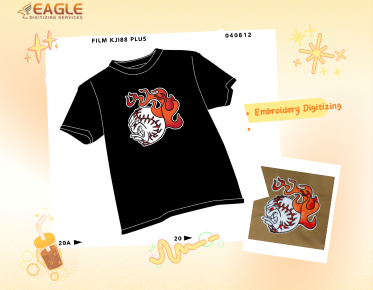Everything to Know About Machine Embroidery Thread
Machine embroidery is a fascinating art form that combines technology with creativity. At the heart of this craft is the embroidery thread, a critical component that can significantly affect the outcome of your designs. Understanding the different types of threads, their uses, and how to select the right one for your project is essential for achieving the best results.
The Basics of Machine Embroidery Thread
Embroidery threads are specially designed for use in embroidery machines. They are typically made from polyester, rayon, cotton, or silk, each offering unique properties. Polyester threads are known for their strength and colorfastness, making them ideal for items that will be washed frequently. Rayon threads, on the other hand, are prized for their sheen and are often used for decorative purposes.
Types of Embroidery Threads
Choosing the right type of thread depends on the project at hand. For instance, polyester threads are excellent for outdoor or frequently laundered items due to their durability. Rayon threads are perfect for projects that require a high sheen and vibrant colors. Cotton threads offer a matte finish and are suitable for heirloom projects, while silk threads provide a luxurious finish but require careful handling.
Factors to Consider When Choosing Embroidery Thread
When selecting embroidery thread, consider the fabric type, the design's complexity, and the intended use of the finished product. The thread's weight is also crucial; lighter threads are suitable for delicate fabrics, while heavier threads are better for thicker materials. Additionally, the thread's color should complement the fabric and design.
Embroidery Thread and Machine Compatibility
Not all threads are compatible with every embroidery machine. It's essential to ensure that the thread you choose works well with your machine to avoid issues such as thread breakage or tension problems. Many manufacturers provide recommendations for compatible threads, which can be a helpful guide.
Maintaining Thread Quality
Proper storage and handling of embroidery threads are vital to maintaining their quality. Store threads in a cool, dry place away from direct sunlight to prevent fading and deterioration. It's also advisable to keep threads in their original packaging or use thread organizers to prevent tangling.
Embroidery Digitizing and Thread Selection
Embroidery digitizing plays a significant role in how threads are used in a design. This process involves converting artwork into a digital file that an embroidery machine can read. Companies like Eagle Digitizing specialize in this service, ensuring that designs are accurately translated into stitch files. Their expertise in embroidery digitizing helps in selecting the right thread type and color to achieve the desired effect.
Exploring Advanced Thread Techniques
Advanced embroidery techniques, such as 3D puff embroidery, require specific thread types and digitizing skills. These techniques add depth and texture to designs, making them stand out. Eagle Digitizing offers services that cater to these advanced techniques, providing high-quality digitized files that ensure the embroidery machine executes the design flawlessly.
Future Trends in Embroidery Threads
The future of embroidery threads is likely to see innovations in materials and technology. Sustainable and eco-friendly threads are becoming more popular, as are threads with special properties, such as UV resistance or antimicrobial features. As technology advances, we can expect to see even more sophisticated threads that enhance the capabilities of embroidery machines.
In conclusion, understanding the nuances of machine embroidery threads can significantly impact the quality and appearance of your embroidery projects. Whether you're a hobbyist or a professional, selecting the right thread and utilizing expert digitizing services like those offered by Eagle Digitizing can elevate your work to new heights. As the industry evolves, staying informed about new materials and techniques will be key to maintaining a competitive edge.



